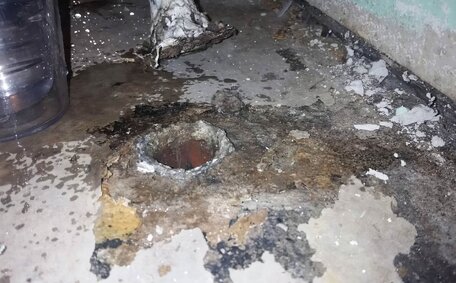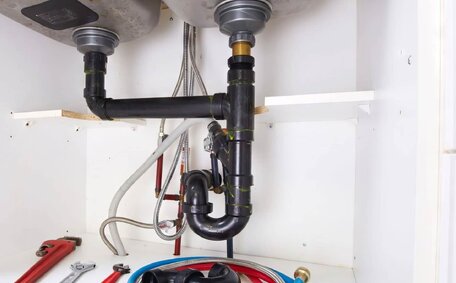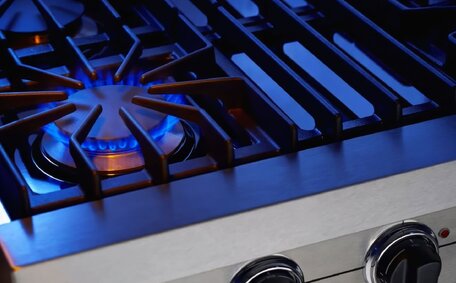Introduction to keeping pets safe during plumbing emergencies
For pet owners, it’s crucial to ensure the safety of your pets during plumbing emergencies. Proper planning and a calm response are key to protecting both your animals and your property.
Leaking pipes, floods, and hazardous materials pose risks that require proper precautions to mitigate.
This guide from Bankstown Plumbing experts offers practical pet safety tips for managing plumbing emergencies.
We’ll discuss preventive steps, how to secure pets during an emergency, first aid basics, and working with plumbers to resolve issues swiftly.
Bankstown pet owners facing plumbing stress now have a dependable guide for support. We understand the unique roles our furry family members play in our homes and lives.
Continue for essential advice on creating an action plan to protect your pets, from cats to dogs, in any emergency.
Recognizing signs of plumbing emergencies
Several key signs can indicate a plumbing emergency that requires swift action to protect your pets:
- Burst pipes causing leaks - Pets may slip on wet surfaces or drink tainted water. Leaks can also create long-term structural water damage.
- Major flooding - Related to burst pipes or appliance issues, floodwaters can cause health risks as they harbour bacteria and pose electrical risks from submerged wires.
- Sewer lines - Natural gas odours signal a potential gas leak danger from carbon monoxide. Gas exposure leads to poisoning which can be particularly severe for small animals like kittens and puppies.
- Sewage backups - Whether sink drains or toilets, sewage overflows spread disease. Don’t allow pets near.
- No hot water - Loss of hot water, which may be too hot or completely absent, especially in winter, can instigate hypothermia for pets and people alike.
As soon as you witness plumbing leaks, strange odours or loss of service, begin assessing for pet hazards.
Move animals to dry rooms to prevent them from entering hazardous areas. Contact your local professional plumbers promptly to resolve the issue.
First steps to secure pets when a plumbing emergency occurs
In a plumbing emergency, your first priority should be to ensure all your pets are safe and secure. Here are some key actions to take within the first few minutes of discovering a plumbing issue:
- Gather all pets inside immediately, including outdoor cats and dogs, to remove them from nearby hazards.
- Isolate pets from the problem area - Identify a safe room without flooding risks, equipped with a door that can be closed. Place your pet(s) inside with fresh food/water.
- Avoid direct contact with contaminants - If pets appear wet from flood waters or leak exposure, gently towel dry them with your hands to remove excess water and pet hair without allowing more contact.
- Check for injuries - Look for signs of cuts, electric shock or weakness. Apply first aid per training and monitor distressed pets closely.
- Prepare travel carriers - Having pet carriers ready will allow your pets to be kept safe in a swift evacuation if hazards escalate.
- Call emergency plumbing services - Once pets are safe, contact experienced plumbers like those at Bankstown Plumbing immediately to address the problem.
While frightening for both pets and owners, plumbing emergencies require calm, quick action focused first on safety. Once companions are removed from the hazardous area, take a deep breath and know that Bankstown Plumbing’s team is on the way to resolve the situation.
Containment and comfort considerations
Ensure a comfortable containment area for your pets during a plumbing emergency. Identify a room where there no plumbing fixtures are present that pets already associate positively with. Bathrooms or laundry rooms prone to flooding make poor choices.
Use crates, gates or a closed door to secure pets in the safe zone, making sure to furnish it with their familiar bedding, toys and treats to alleviate stress. Having pheromone diffusers or calming supplements on hand is also recommended; for more information, consult your veterinarian.
Put litter down at your setup of a temporary toilet site for pets by using puppy pads, cat litter boxes or outdoor runs. Provide fresh food and water by having backup supplies on hand in case of compromised pipes, and consider a temporary setup in the yard.
Monitor room temperature closely if hot water or heating is lost. Move pets away from cold draughts and cover crates to retain warmth. In hot weather, focus on ventilation, shade and cooling sources.
Avoid leaving pets unattended for long. Check on them often, provide affection and minimal stimulation. Keep collars accessible but remove harnesses so nothing gets caught on exposed pipes or sharp edges while crated.
Prompt resolution of plumbing issues can protect your home and minimise risks for your pets. After repairs by Bankstown Plumbing Services, cautiously reacquaint your pets with the home environment. Watch for residual hazards like toilet lids left up or chemical residue.
Potential plumbing hazards and risks to pets
Plumbing emergencies often present more than hazardous scenarios that could seriously impact the health and safety of your animals if encountered. Being aware of these risks allows pet owners to be armed with safety tips that better protect companions.
Potential dangers to watch for include:
- Toxins - Cleaners, solvents or antifreeze used in plumbing repairs can poison curious pets. Keep them locked away.
- Sharp debris - Carefully clean up jagged shards from burst metal pipes or broken porcelain from toilets which could badly cut paw pads.
- Exposed wires - Chewed electrical wires pose electrocution and burning risks.
- Sewage - Backed-up drain water harbours dangerous bacteria, viruses and parasites if ingested.
- Heat sources - Pets may get burned by touching hot water from a leaking water heater or compromised pipes.
A frequent risk is pets accessing toilets when lids are not secured after a repair. Never flush cat waste in the toilet, as cats especially risk drowning if they fall into the toilet bowl.
Informed pet owners can take proactive steps to prevent dangers. Restrict access to tools and materials by securely storing them and keeping toilet lids closed. If pets show distressing symptoms post-exposure, seek immediate veterinary help.
Importance of pet identification
Proper identification for all your pets is essential, especially during a plumbing emergency. ID tags, microchips and even photos of distinguishing markings create peace of mind if your pet slips outdoors amid chaos or needs temporary relocation.
Ensure rabies tags are always on pet collars for quick evacuation when necessary. Consider a second ID tag with contact information and crucial medical details. Regularly ensure tags are secure and information remains up-to-date.
Microchips offer a permanent form of identification linked to an owner’s details in a registry. Microchips, though not visible like collar tags, have helped reunite numerous lost pets with their owners.
Most veterinarians implant these rice-sized chips beneath pet skin. Annual registration renewal is essential for successful reunification with lost pets.
Maintaining recent photos of unique coat patterns, as well as any noteworthy scars or injuries, supports lost pet reports. Distinctive features help others readily identify and pick up a loose animal until reunited with you.
Bankstown Plumbing encourages proactive pet ID measures so your family, including furry friends, stays connected. Multiple identification methods ease the process of temporary relocations during repairs, letting you focus on essentials like leashes instead of a frantic search for missing pets in the chaos.
Preparing a pet safety kit
An emergency preparedness kit tailored for your pets offers vital support during plumbing crises. Plan your collection of essential supplies by starting with items like:
- 72-hour supply of pet food and water
- Can opener and bowls
- Medications with detailed dosage instructions
- First aid kit with gauze, tape, antiseptic wipes
- Antibacterial hand soap
- Paper towels, waste bags, disinfectant
- Blankets, towels, crates or carriers
- Current photos of your pets in case they get lost
- Contact info for your vet, emergency pet hospital and poison control
- List of friendly neighbours who could assist with pet care
Keep copies of all medical records and prescription details, alongside your contact information, in a waterproof bag. Having their microchip and ID tag details handy is also key.
Keep your pet first aid basics current through regular veterinary guidance or certified training courses. Learn techniques like bandaging wounds, handling waste safely and monitoring unwell pets.
Storing this pet-focused emergency kit in an easily accessible spot will allow quick response when plumbing disasters occur. Combine preparedness measures with Bankstown Plumbing’s rapid response to keep companions safe.
Ensuring pet welfare and property restoration after an emergency
After a plumbing emergency, your pets’ health should be your top priority. Carefully observe all animals for signs of injury, stress or illness. If you notice limping, changes in appetite, bowel movements, respiratory issues or lethargy, contact your veterinarian immediately.
Make sure to check all floors and walls for chemical residue, sharp debris or exposed wires.
Replace toilet lids and use caution entering bathrooms initially.
Test your water temperature at all taps before bathing pets or allowing them to drink. Install pressure balancing valves to prevent scalds. Scan for any lingering dampness and only permit access once floors are fully dry to prevent slips.
Gradually reintroduce pets to repaired areas, keeping a close eye for concerning behaviour. Provide ample reassurance and maintain comforting routines to ease anxiety. Having your dog’s safety kit and veterinarian details handy during early re-entry allows swift response if issues emerge.
Bankstown Plumbing encourages contacting our team immediately if new hazards arise during home restoration. We care deeply about pets remaining safe following plumbing disasters and will readily address any outstanding repair needs impacting animal welfare.






